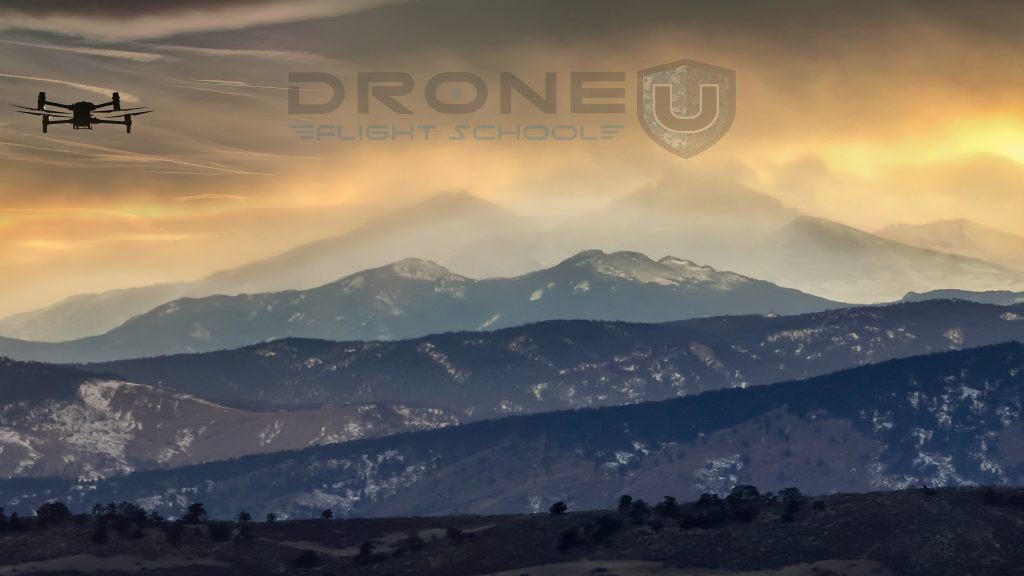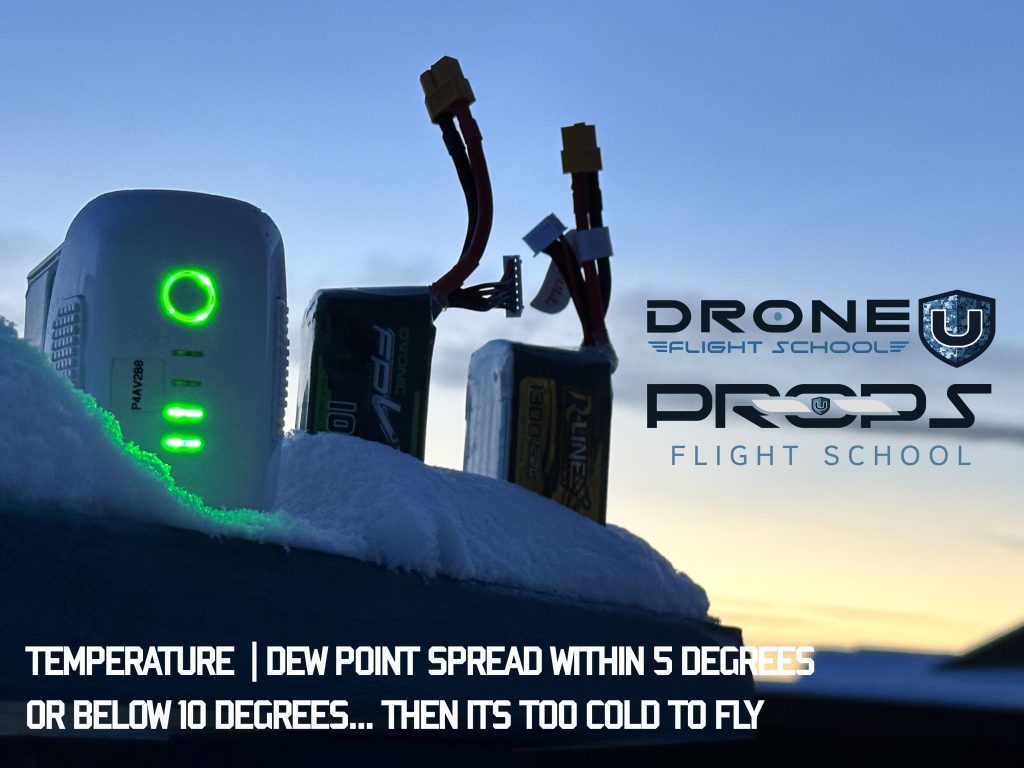
How cold is too cold to fly a drone in the winter time? If the temperature is within 5 degrees of the dew point, it is too cold to fly a drone.
As a drone operator, it’s important to be aware of the weather conditions before flying your drone. While most drones are designed to operate in a range of temperatures, flying in extreme cold or hot conditions can affect the performance of the drone and even cause damage.
One important factor to consider is the temperature and dew point deviation. The dew point is the temperature at which the air is saturated with moisture, and when the temperature drops below the dew point, moisture condenses and forms dew or frost. This can affect the drone’s sensors, batteries, and other components, making it difficult or impossible to fly safely.
Practically speaking, if ice builds up on the propellers, the motors will have to work harder to create the same lift. Pilots may experience motor-overspin warnings during in flight prior to catastrophic loss of the drone.
So, how cold is too cold to fly a drone? It’s generally recommended to avoid flying a drone in temperatures below freezing (32°F or 0°C), especially if there is a minimal dew point deviation.
The formula to know how cold is too cold to fly a drone.
If the temperature is 30 degrees, and the dew point 28, that’s a no fly. Because the temperature and dew point are within 5 degrees. So how cold is too cold, typically below 10 degrees and if the dew point is within 5 degrees of the temperature.

However, some drones are specifically designed to operate in cold temperatures and may have a lower temperature limit. Drones that contain self heating batteries are able to take flight for significantly longer periods of time.
It’s important to refer to the manufacturer’s guidelines for information on the safe operating temperature range for your specific drone.
In addition to the temperature, other factors to consider when deciding whether to fly a drone include wind speed, precipitation or humidity, and cloud cover. It’s always a good idea to check the localized weather forecast and use good judgment before taking to the skies.
In summary, it’s generally best to avoid flying a drone in extremely cold temperatures, especially if there is a significant dew point deviation. Refer to the manufacturer’s guidelines for information on the safe operating temperature range for your specific drone, and always be aware of the weather conditions before flying.







Add Your Comment